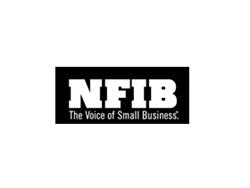Small-Business Owners Wary of Interest Rate Cut
Washington, DC, November 13, 2007--The National Federation of Independent Business Small Business Economic Trends Optimism Index fell 1.1 points to 96.2 in October (1986=100), continuing the decline that followed the Federal Reserve interest rate cut in September.
"Things were looking good until September 18 when the Fed warned that the economy was sinking," said NFIB Chief Economist William Dunkelberg. "The logical response of small-business owners was to cut hiring, capital spending and other growth-related activities."
Owners did try to hire and fill needed positions in October, but with little success. Fourteen percent reported increasing employment an average of 2.9 workers per firm compared to 11% who reported workforce reductions averaging 4.2 workers (seasonally adjusted), an average decrease of about 0.1 employees per firm. In construction, 11% increased the size of their workforce, and 16% cut employment (not seasonally adjusted).
Job creation plans were positive in all industry groups with the exception of financial services and agriculture, where declines in jobs are expected at this time of year. Professional service firms had the strongest job creation plans. The hottest areas were the West South Central and Mountain regions. Net job creation plans were flat in the Pacific states and negative in the Mid Atlantic states.
However, plans to make capital expenditures over the next few months lost two points, falling to 27% of all firms. Fourteen percent of the owners said that the current period is a good time to expand facilities.
There are signs of some firming of demand in the construction industry. In July of 2006, 40% of the construction firms were raising prices, compared to a net 1% reporting higher prices in September 2007. Now, more firms are raising prices, indicating stronger support from non-residential construction and home additions and repairs.
"The Fed may be preoccupied with recession but small-business owners’ reports of price hikes suggest that inflation can’t be dismissed," said Dunkelberg. "The historic relationship between inflation and the percent of owners reporting higher prices suggests that inflation will be showing some new, unwanted, vitality."
On
"Clearly we are not experiencing a credit crunch by any standard," said Dunkelberg.
